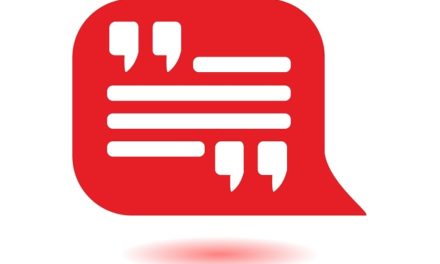Introduction
Citing research papers is a fundamental aspect of academic and professional writing. Proper citations give credit to the original authors, uphold academic integrity, and provide readers with sources for further study. Additionally, bibliographical references ensure that citations are structured correctly, making it easier for readers to locate original works.
This article provides a comprehensive guide on how to cite a research paper in various citation styles, the importance of proper citation, and best practices for formatting bibliographical references.
Why is Citing Research Papers Important?
Citing research papers serves multiple essential purposes:
- Acknowledgment of Sources – Gives due credit to original authors.
- Avoiding Plagiarism – Helps prevent academic dishonesty.
- Supporting Arguments – Strengthens research credibility by backing claims with authoritative sources.
- Providing Readers with Further Reading – Allows others to explore cited research in greater depth.
- Following Academic Standards – Aligns with institutional and journal requirements.
Understanding Citation Styles
Different disciplines use different citation styles, each with its own formatting guidelines. The most commonly used citation styles include:
- APA (American Psychological Association) – Common in social sciences.
- MLA (Modern Language Association) – Used in humanities and literature studies.
- Chicago Style – Often used in history and business.
- Harvard Referencing – Widely used in various academic fields.
- IEEE (Institute of Electrical and Electronics Engineers) – Preferred in engineering and technology.
- AMA (American Medical Association) – Used in medical and health sciences.
How to Cite a Research Paper in Different Styles
1. APA (7th Edition) Citation
In-text Citation:
- (Smith, 2020, p. 45) – for direct quotes.
- (Smith, 2020) – for paraphrased content.
Reference List Format: Smith, J. (2020). The impact of social media on communication. Oxford University Press.
Example: Doe, J. (2021). Advances in renewable energy research. Cambridge University Press.
2. MLA (9th Edition) Citation
In-text Citation:
- (Smith 45) – no comma between author and page number.
Works Cited Format: Smith, John. The Impact of Social Media on Communication. Oxford University Press, 2020.
Example: Doe, Jane. Advances in Renewable Energy Research. Cambridge University Press, 2021.
3. Chicago (Notes and Bibliography) Citation
Footnote Citation:
- John Smith, The Impact of Social Media on Communication (Oxford: Oxford University Press, 2020), 45.
Bibliography Format: Smith, John. The Impact of Social Media on Communication. Oxford: Oxford University Press, 2020.
Example: Doe, Jane. Advances in Renewable Energy Research. Cambridge: Cambridge University Press, 2021.
4. Harvard Referencing
In-text Citation: (Smith, 2020, p. 45)
Reference List Format: Smith, J. (2020) The impact of social media on communication. Oxford: Oxford University Press.
Example: Doe, J. (2021) Advances in renewable energy research. Cambridge: Cambridge University Press.
5. IEEE Citation
In-text Citation:
- [1]
Reference List Format: [1] J. Smith, The impact of social media on communication, Oxford, UK: Oxford University Press, 2020.
Example: [1] J. Doe, Advances in renewable energy research, Cambridge, UK: Cambridge University Press, 2021.
6. AMA Citation
In-text Citation: (Smith 2020)
Reference List Format: Smith J. The impact of social media on communication. Oxford, UK: Oxford University Press; 2020.
Example: Doe J. Advances in renewable energy research. Cambridge, UK: Cambridge University Press; 2021.
How to Format a Bibliographical Reference List
A bibliography or reference list should be well-organized and formatted according to the citation style being used. Below are some best practices:
- Alphabetical Order – Arrange references alphabetically by the last name of the first author.
- Hanging Indent – Most citation styles require a hanging indent for entries.
- Consistent Formatting – Follow the correct punctuation and italics rules.
- Use Proper Capitalization – APA and Chicago capitalize major words in book titles, while MLA and Harvard use sentence case.
- Include DOI for Online Sources – If citing an online journal, include the Digital Object Identifier (DOI).
Best Practices for Citing Research Papers
- Use Citation Management Tools – Software like EndNote, Mendeley, and Zotero can help automate citation formatting.
- Verify Source Details – Ensure the author’s name, publication year, and page numbers are accurate.
- Avoid Overcitation – Only cite relevant sources without overwhelming the reader with excessive references.
- Follow Instructor or Journal Guidelines – Different institutions and journals may have specific formatting rules.
- Proofread Citations – Check for consistency and accuracy before submission.
Common Mistakes to Avoid in Citations
- Missing Page Numbers – Always include page numbers for direct quotes.
- Incorrect Formatting – Ensure the citation follows the correct style rules.
- Inconsistent Use of Et Al. – Apply “et al.” correctly for multiple-author citations.
- Failure to Differentiate Between Similar Sources – If citing multiple works by the same author, include the title or year for distinction.
- Not Updating Citations When Revising Papers – Ensure all references match the final version of the paper.
Conclusion
Citing research papers accurately and providing a properly formatted bibliographical reference is essential for academic integrity, credibility, and scholarly communication. Each citation style has specific formatting rules, and it is crucial to follow them carefully. Using citation management tools and adhering to best practices can significantly ease the process. By ensuring proper citations, writers can enhance the clarity and reliability of their work while giving due credit to the original authors.
You might be interested in Services offered by Proof-Reading-Service.com
Journal Editing
Journal article editing services
PhD Thesis Editing
PhD thesis editing services
Expert Editing
Expert editing for all papers
Medical Editing
Medical Editing Services
Research Editing
Research paper editing services
Book Editing
Professional book editing services














